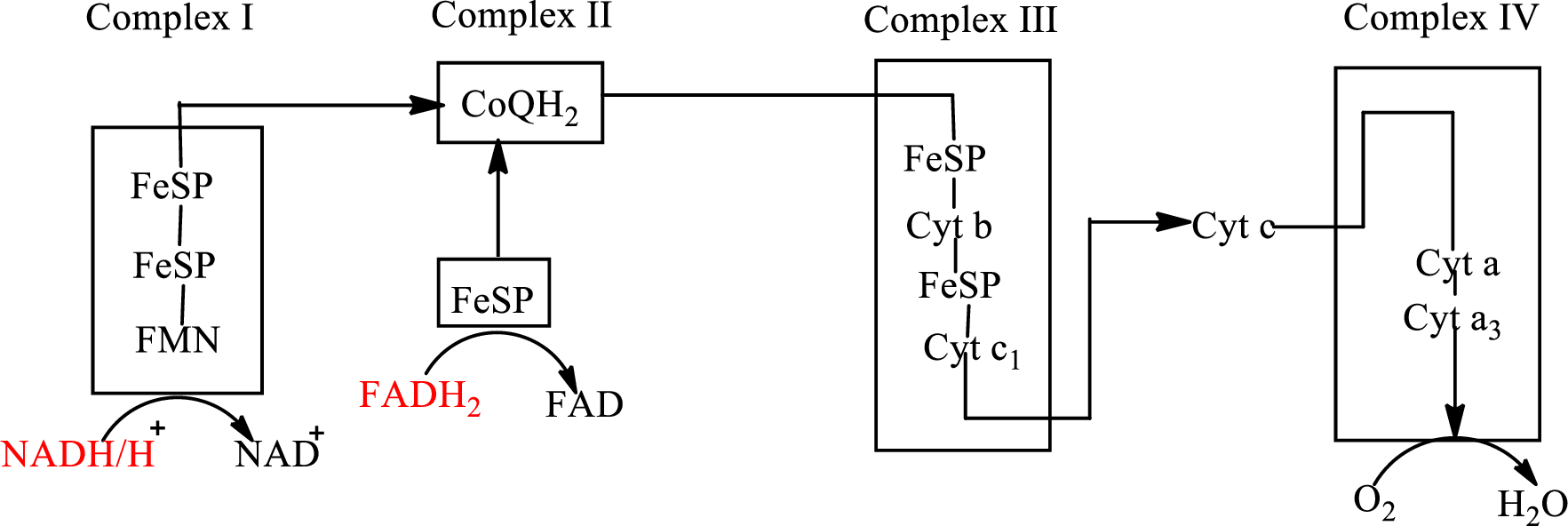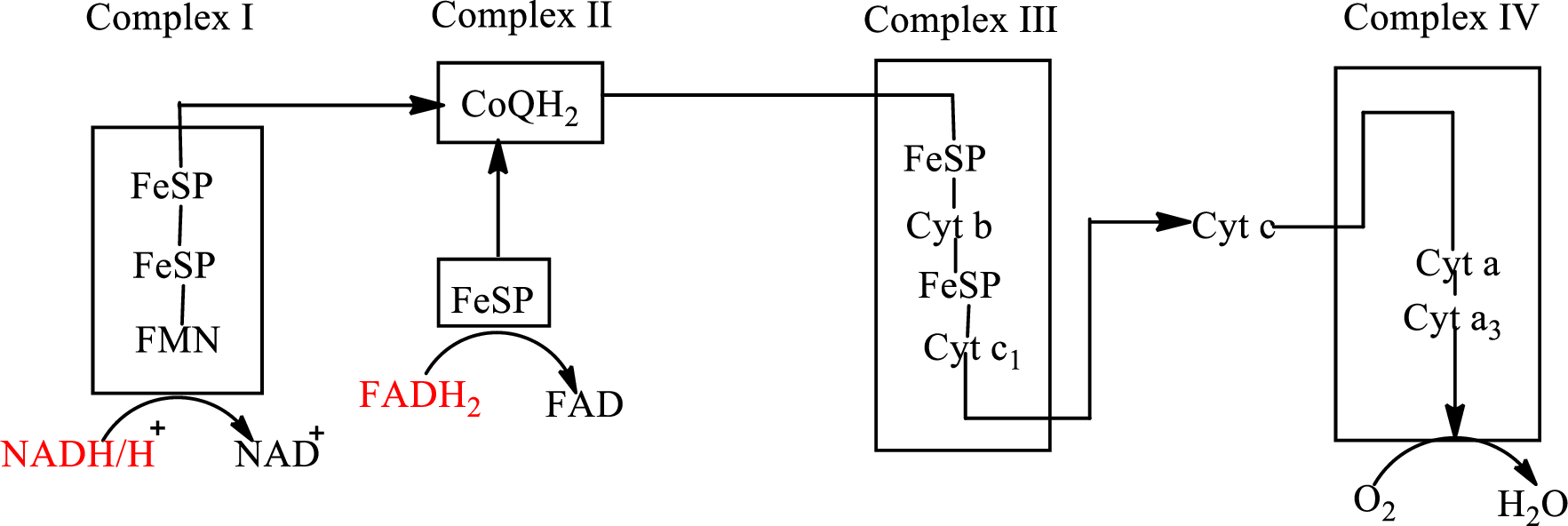
Concept explainers
(a)
Interpretation: To identify the step of the citric acid cycle in that ATP-precursor-molecule is generated that enter the ETC at enzyme complex I.
Concept introduction: Citric acid cycle is the third stage of the biochemical energy production process. The cycle includes the reactions in which the acetyl part of acetyl CoA is oxidized and leads to the formation of carbon dioxide and
Electron transport chain is a sequence of biochemical reactions in which electrons and hydrogen atoms from the citric acid cycle are transferred to various intermediate carriers and finally reacts with molecular oxygen to form a water molecule. The reaction of the formation of the water is:
The electron transport chain is as follows:

NADH is the reduced form of nicotinamide adenine dinucleotide. It is employed as an oxidizing agent in various reactions like oxidation of secondary alcohol into a
(b)
Interpretation: To identify the step of the citric acid cycle in that ATP-precursor-molecule is generated that enter the ETC at enzyme complex II.
Concept introduction: Citric acid cycle is the third stage of the biochemical energy production process. The cycle includes the reactions in which the acetyl part of acetyl CoA is oxidized and leads to the formation of carbon dioxide and
Electron transport chain is a sequence of biochemical reactions in which electrons and hydrogen atoms from the citric acid cycle are transferred to various intermediate carriers and finally reacts with molecular oxygen to form a water molecule. The reaction of the formation of the water is:
The electron transport chain is as follows:

FADH2 is the reduced form of flavin adenine dinucleotide. The main function of flavin adenine dinucleotide is to act as an oxidizing agent and used by the cell in oxidation reactions like oxidation of fatty acid.
(c)
Interpretation: To identify the step of the citric acid cycle in that ATP-precursor-molecule is generated that does not enter the ETC.
Concept introduction: Citric acid cycle is the third stage of the biochemical energy production process. The cycle includes the reactions in which the acetyl part of acetyl CoA is oxidized and leads to the formation of carbon dioxide and
Electron transport chain is a sequence of biochemical reactions in which electrons and hydrogen atoms from the citric acid cycle are transferred to various intermediate carriers and finally reacts with molecular oxygen to form a water molecule. The reaction of the formation of the water is:
The electron transport chain is as follows:

Want to see the full answer?
Check out a sample textbook solution
Chapter 12 Solutions
Organic And Biological Chemistry
- Specify, by name and by number present, the structural subunits present in an ATP molecule.arrow_forwardWhat are the three kinds of enzymes-controlled reaction so that the chemical bond energy from a certain nutrietiens is released to the cell in a form of ATP?arrow_forwardWhich of the following Galpha subunits activates PLC? Gi Gs Gq all of the abovearrow_forward
- What kind of reaction is catalyzed by each of the following enzymes? a. a protease b. a reductase c. a lipasearrow_forwardfor the following, explain whether it is in the oxidized or reduced form & then write the full name of the coenzyme. a.) NADP+ b.) NADH c.) FADH2arrow_forwardFor the following reactions, name both the enzyme that catalyzes the reaction and the required coenzyme:arrow_forward
- Indicate whether an anabolic pathway or a catabolic pathway does the following: a. produces energy in the form of ATP b. involves primarily oxidation reactionsarrow_forwardThe ΔG of ATP hydrolysis in a test tube under standard conditions is -7.3 kcal/mol. The ΔG for the reaction A+B C under the same conditions is +4.0 kcal/mol. How would the addition of an enzyme that catalyzes A+B C most likely alter the coupled reactions?arrow_forward
 Organic And Biological ChemistryChemistryISBN:9781305081079Author:STOKER, H. Stephen (howard Stephen)Publisher:Cengage Learning,
Organic And Biological ChemistryChemistryISBN:9781305081079Author:STOKER, H. Stephen (howard Stephen)Publisher:Cengage Learning, General, Organic, and Biological ChemistryChemistryISBN:9781285853918Author:H. Stephen StokerPublisher:Cengage Learning
General, Organic, and Biological ChemistryChemistryISBN:9781285853918Author:H. Stephen StokerPublisher:Cengage Learning Chemistry for Today: General, Organic, and Bioche...ChemistryISBN:9781305960060Author:Spencer L. Seager, Michael R. Slabaugh, Maren S. HansenPublisher:Cengage Learning
Chemistry for Today: General, Organic, and Bioche...ChemistryISBN:9781305960060Author:Spencer L. Seager, Michael R. Slabaugh, Maren S. HansenPublisher:Cengage Learning



